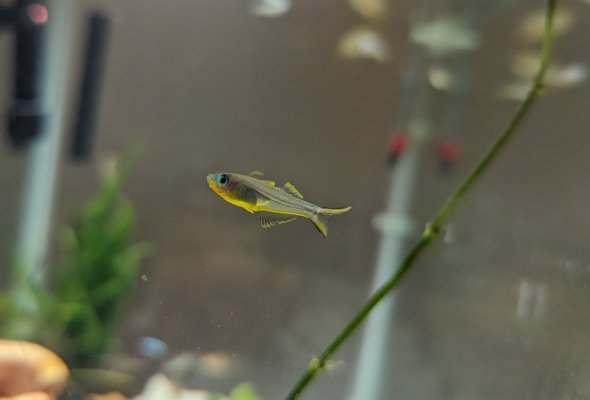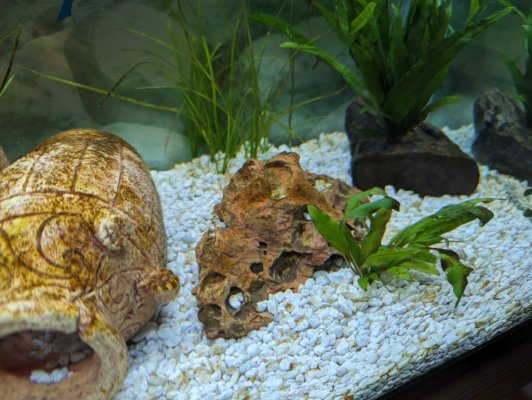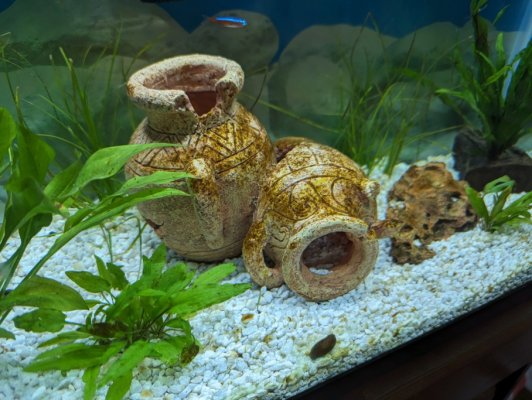Also, I followed your advice and thought about what we really want in this aquarium.
The conclusion I came to is as follows:
Peaceful community tank with hardy fish that are interesting, interactive and colorful but not too boisterous and also non-aggressive. Tank should also be moderately planted with low maintenance plants.
I also took your suggestion and searched (using AI ... a bit of an upgrade over your standard Google/Bing ) for suitable stocking suggestions, and this is what was provided:
) for suitable stocking suggestions, and this is what was provided:
- Harlequin Rasboras
- Neon Tetras
- Cory catfish (ChatGPT/Bing AI recommended Bronze, Julii, Panda or Skunk)
- Cherry shrimp
They also recommended the following as 'centerpiece fish':
- Bolivian Ram
- Kribensis Cichlid
- Honey Gourami (go figure ...)
Also quoted five sources as suggesting that these are generally healthy and hardy species ...
Funnily enough, all of the searches I tried indicated that the forktail rainbowfish I have are supposed to be 'peaceful' and 'non-aggressive' and suitable fish for a peaceful community tank ... as you noted ... "how's that working for you/me"
For next steps:
1) Should I remove/re-home the rainbowfish? If so, how?
2) What fish would you recommend (and in what order, if possible) for a tank with the parameters/characteristics I noted above?
The conclusion I came to is as follows:
Peaceful community tank with hardy fish that are interesting, interactive and colorful but not too boisterous and also non-aggressive. Tank should also be moderately planted with low maintenance plants.
I also took your suggestion and searched (using AI ... a bit of an upgrade over your standard Google/Bing
- Harlequin Rasboras
- Neon Tetras
- Cory catfish (ChatGPT/Bing AI recommended Bronze, Julii, Panda or Skunk)
- Cherry shrimp
They also recommended the following as 'centerpiece fish':
- Bolivian Ram
- Kribensis Cichlid
- Honey Gourami (go figure ...)
Also quoted five sources as suggesting that these are generally healthy and hardy species ...

Funnily enough, all of the searches I tried indicated that the forktail rainbowfish I have are supposed to be 'peaceful' and 'non-aggressive' and suitable fish for a peaceful community tank ... as you noted ... "how's that working for you/me"
For next steps:
1) Should I remove/re-home the rainbowfish? If so, how?
2) What fish would you recommend (and in what order, if possible) for a tank with the parameters/characteristics I noted above?




 Momentum could send them flying.
Momentum could send them flying. 
